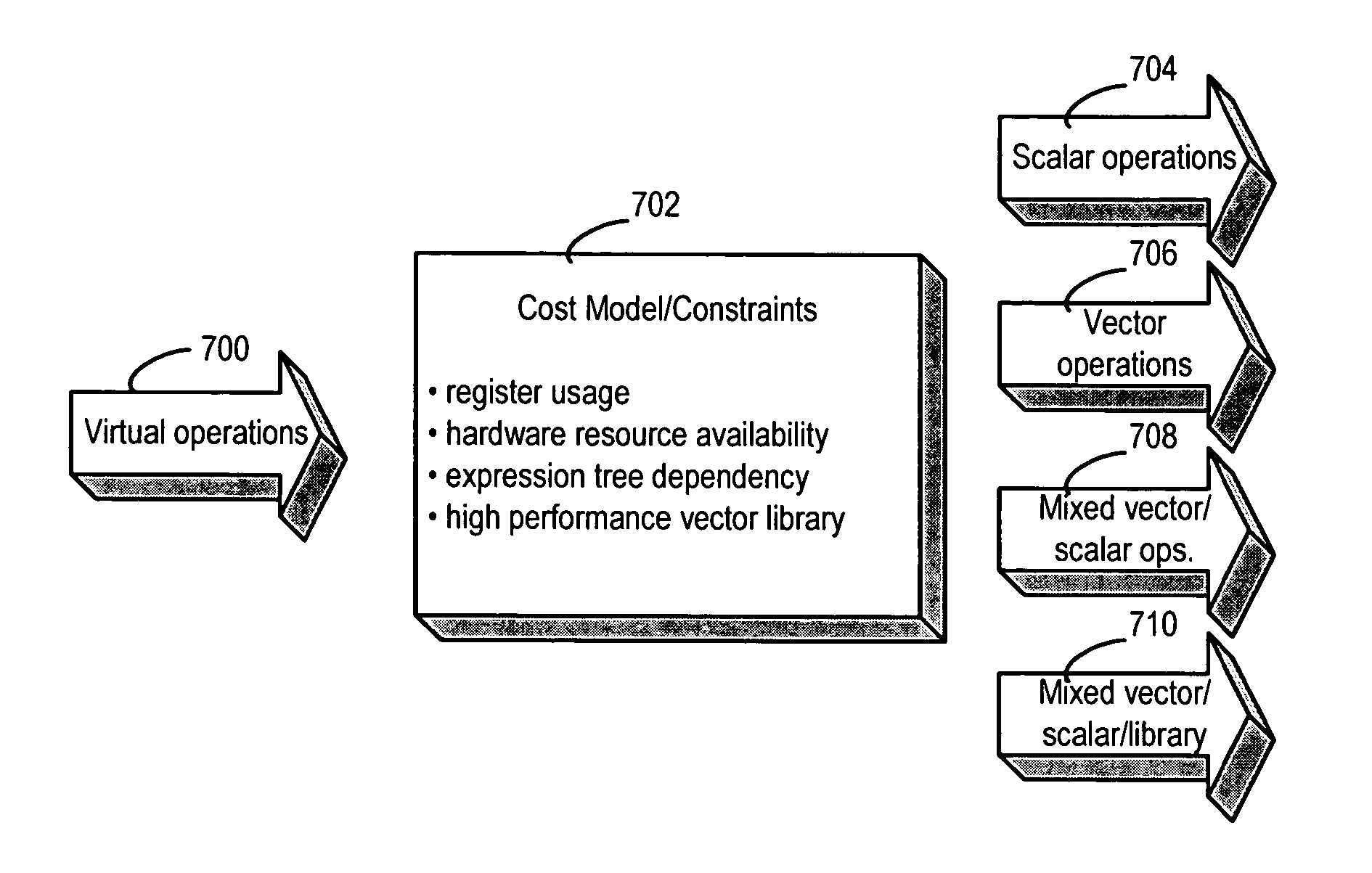Framework for generating mixed-mode operations in loop-level simdization
a loop-level simdization and mixed-mode operation technology, applied in the field of system and method for vectorizing loop code, can solve the problems of time-consuming and error-prone explicit vector programming, vectorization for simd architectures has raised new problems, and alignment constraints of simd memory units present a great challenge to automatic simdization
- Summary
- Abstract
- Description
- Claims
- Application Information
AI Technical Summary
Benefits of technology
Problems solved by technology
Method used
Image
Examples
Embodiment Construction
[0040]The following is intended to provide a detailed description of an example of the invention and should not be taken to be limiting of the invention itself. Rather, any number of variations may fall within the scope of the invention, which is defined in the claims following the description.
[0041]A preferred embodiment of the present invention combines generation of mixed-mode loop code for vector-enabled processors with the simdization of sequential loop code. Sections 1-4 of this Detailed Description describe the process for simdizing loop code that is utilized by a preferred embodiment of the present invention. Section 5 then describes a method of generating mixed-mode loop code, which may be combined with the simdization technique described in Sections 1-4. Finally, Section 6 provides an example of a computing platform in which a preferred embodiment of the present invention may be implemented.
1. Preliminary Matters
[0042]In this section, an overview of the alignment handling ...
PUM
 Login to View More
Login to View More Abstract
Description
Claims
Application Information
 Login to View More
Login to View More - R&D
- Intellectual Property
- Life Sciences
- Materials
- Tech Scout
- Unparalleled Data Quality
- Higher Quality Content
- 60% Fewer Hallucinations
Browse by: Latest US Patents, China's latest patents, Technical Efficacy Thesaurus, Application Domain, Technology Topic, Popular Technical Reports.
© 2025 PatSnap. All rights reserved.Legal|Privacy policy|Modern Slavery Act Transparency Statement|Sitemap|About US| Contact US: help@patsnap.com



